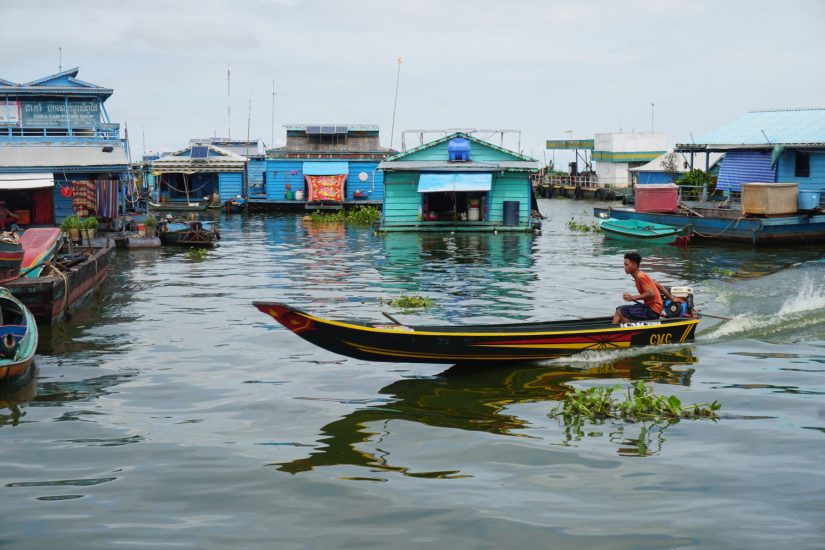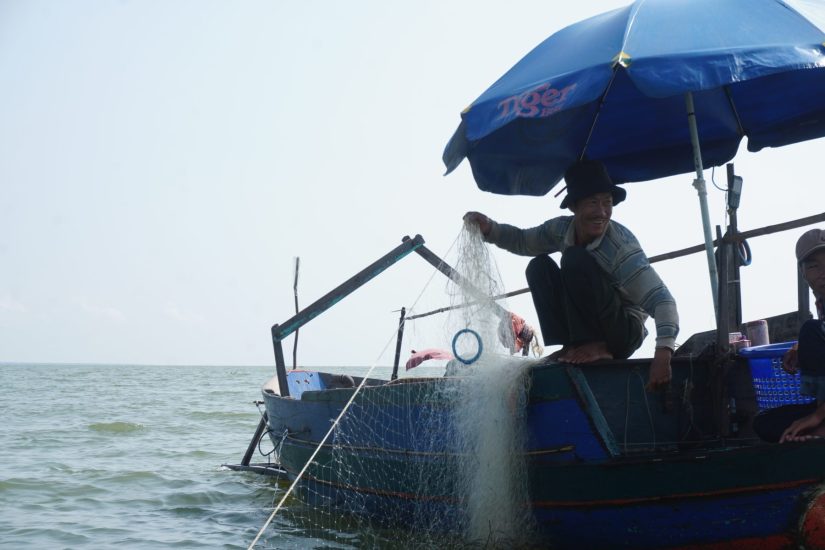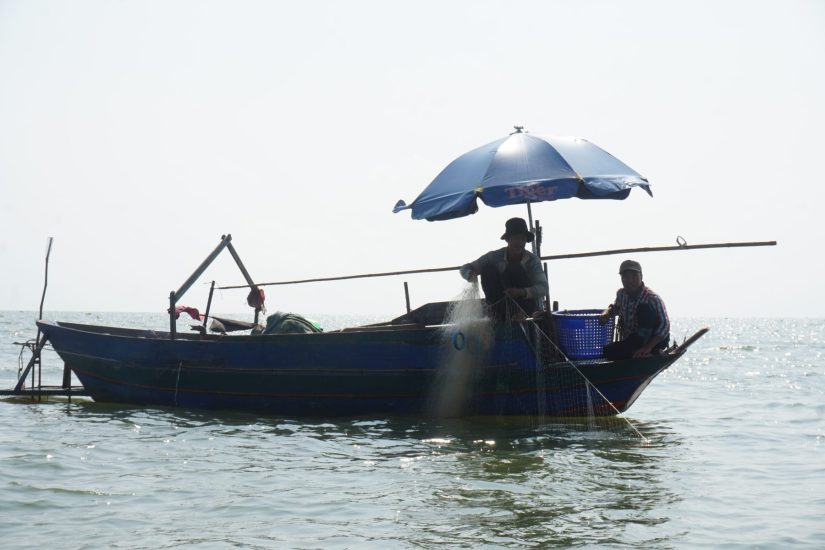Studying toxic metals in fish in southeast Asia’s largest freshwater lake
In the largest freshwater lake in southeast Asia, Shorna Sabikunnahar is looking into the ecological and environmental drivers of toxic metals in resident fish.
Conducting her research on Tonle Sap Lake in Cambodia, which is part of the Mekong River system, Shorna is a SAFS PhD student in the Holtgrieve Ecosystem Ecology Lab (HEEL). Designated as a Biosphere Reserve by UNESCO, Tonle Sap Lake is one of the most diverse and productive ecosystems on the globe.
Collecting and sampling over 1000 samples of fish, water, sediment and other species such as mollusks and crustaceans, Shorna visited Cambodia in both the dry and rainy reason to build her sample collection from 10 different locations. Tonle Sap Lake faces a huge transformation depending on the season. In the dry season when it drains into the Mekong River, the lake length is over 100 miles. This grows more than five times in area during the rainy season, with water flowing from the Mekong back into the lake. This brings with it different nutrients and biodiversity, but also impacts levels of toxic metals.

Shorna analyzed the presence and levels of toxic metals in 39 different species of fish found in the lake. The Lower Mekong River supports more than 60 million people, with 80% of their protein coming from fish within Tonle Sap Lake. Studying parts of the food web, including fish, is critical to shed insight into a number of different things: the fishery itself, if humans are receiving the nutrients they need from these fish, and if there are health risks posed by the level of toxic metals in fish. Some of the species of fish studied by Shorna include Parambassis wolffii, Pangasianodon hypophthalmus, Boesemania microlepis, Phalacronotus apogon, Ompok bimaculatus, Mystus, mysticetus, Hamibagrus spilopterus and Channa micropeltes.
Collecting water and sediment samples directly from the lake and fish samples from the floating villages and fish markets located on the lake, Shorna has found that it’s not always the bigger fish that have the highest level of toxic metals present, which is contrary to the usual pattern. In Shorna’s analysis, some of the largest fish had levels at the bottom of the range, whereas some of the smaller fish, hardly bigger than a finger, had the highest amount of metal concentrations. This wide and unexpected variance suggests that levels of toxic metals is driven by the feeding habits of fish such as what they are eating and where.
One of the assumptions in Shorna’s study was that climate change and numerous hydropower dams have a significant impact on the variation in toxic metal content in fish. Specifically looking at mercury, during flooding events when floodplains and forests are submerged, the decomposition of organic matter, such as leaves and other vegetation, begins. This process reduces the oxygen levels in the water and increases methylation. Methylation is the conversion of inorganic mercury into easily accessible methylmercury, which fish can readily accumulate in their bodies.

However, Shorna found that only the feeding ecology of fish (their feeding patterns, food sources, and trophic positions) influence mercury accumulation in fish. Environmental factors such as seasonal change and variation in water level throughout the year or flooding is not significant. This result is interesting because some previous studies in the Arctic found that environmental factors such as temperature influences mercury accumulation in fish. Another study in the Amazon River basin found that despite the absence of human-induced sources, fish contain relatively high levels of mercury due to the impact of annual flooding.
The next step in Shorna’s research is to analyze the fatty acids and other vitamins found in fish – the nutrients that humans eat fish to gain – as well as the toxic metals levels. But how do we know what fish people are eating? Household fish consumption pattern data already exists, and Shorna will combine this data on what people eat with her results on toxic metals and nutrient loads in fish. The aim? To see if these fish pose any carcinogen or non-carcinogenic risks to people as well as whether their nutritional requirements are being fulfilled or not.
The Mekong River is a huge and important area, and by studying one of the most important lakes in this system, Shorna’s work can provide deeper insight into the wider ecological system of the Mekong and the fish that call it home.
